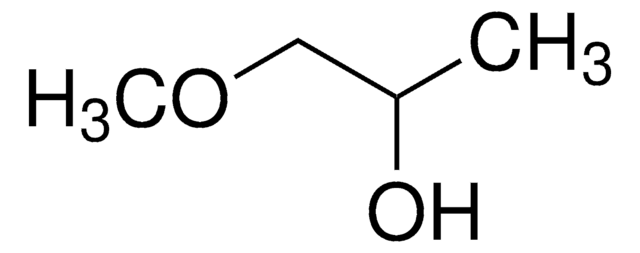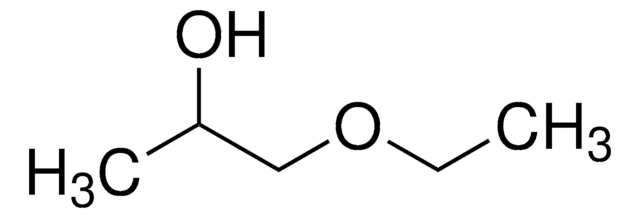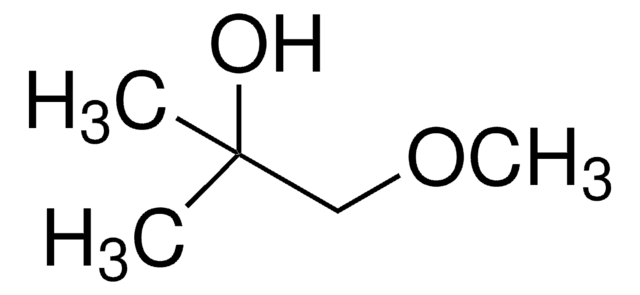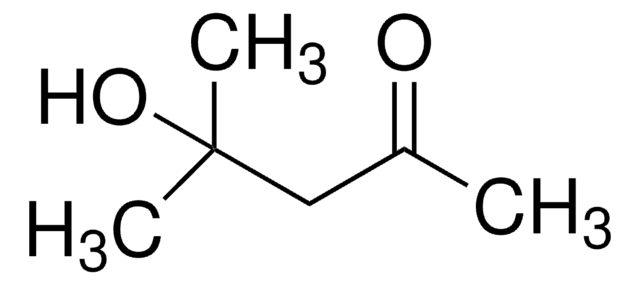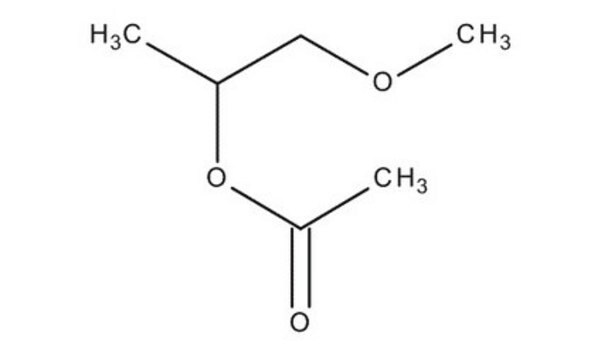65692
1-Methoxy-2-propanol
analytical standard
Synonym(e):
Propylenglycolmonomethylether, Propylenglykol-methylether
About This Item
Empfohlene Produkte
Qualität
analytical standard
Qualitätsniveau
Dampfdichte
3.12 (vs air)
Dampfdruck
10.9 mmHg ( 25 °C)
Assay
≥99.7% (GC)
Selbstzündungstemp.
532 °F
Haltbarkeit
limited shelf life, expiry date on the label
Expl.-Gr.
13.8 %
Methode(n)
HPLC: suitable
gas chromatography (GC): suitable
Brechungsindex
n20/D 1.403 (lit.)
n20/D 1.403
bp
118-119 °C (lit.)
Dichte
0.916 g/mL at 25 °C (lit.)
Anwendung(en)
environmental
Format
neat
SMILES String
CC(O)COC
InChI
1S/C4H10O2/c1-4(5)3-6-2/h4-5H,3H2,1-2H3
InChIKey
ARXJGSRGQADJSQ-UHFFFAOYSA-N
Suchen Sie nach ähnlichen Produkten? Aufrufen Leitfaden zum Produktvergleich
Allgemeine Beschreibung
Anwendung
Signalwort
Warning
H-Sätze
Gefahreneinstufungen
Flam. Liq. 3 - STOT SE 3
Zielorgane
Central nervous system
Lagerklassenschlüssel
3 - Flammable liquids
WGK
WGK 1
Flammpunkt (°F)
93.2 °F - closed cup
Flammpunkt (°C)
34 °C - closed cup
Persönliche Schutzausrüstung
Eyeshields, Faceshields, Gloves, type ABEK (EN14387) respirator filter
Hier finden Sie alle aktuellen Versionen:
Besitzen Sie dieses Produkt bereits?
In der Dokumentenbibliothek finden Sie die Dokumentation zu den Produkten, die Sie kürzlich erworben haben.
Kunden haben sich ebenfalls angesehen
Artikel
The Utility of Headspace Grade Solvents for the Analysis of Organic Volatile Impurities
Unser Team von Wissenschaftlern verfügt über Erfahrung in allen Forschungsbereichen einschließlich Life Science, Materialwissenschaften, chemischer Synthese, Chromatographie, Analytik und vielen mehr..
Setzen Sie sich mit dem technischen Dienst in Verbindung.